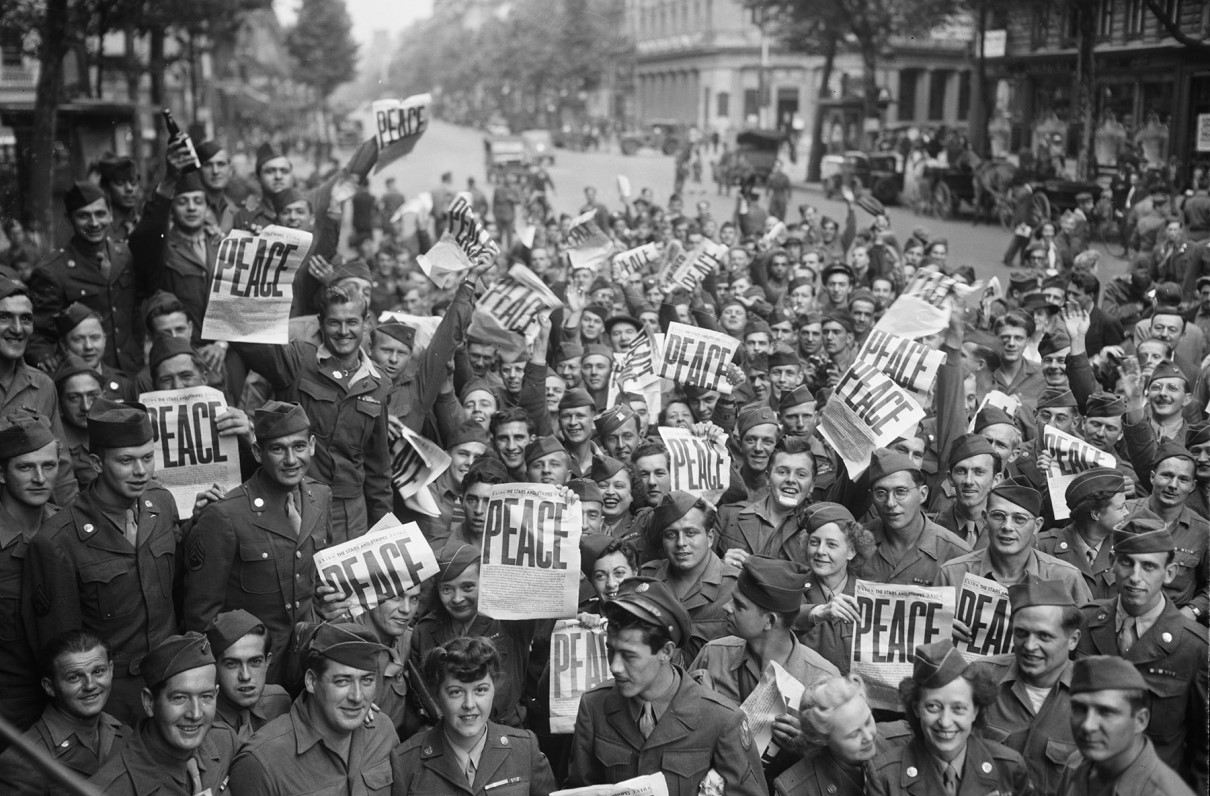Less than two months after headlines nationwide screamed the joyous news of war’s end in the Pacific, the second edition of the quarterly Retired Officers Association Bulletin had its own bold-type announcement across the front page.
“Results of Vote on New Plan for Membership and Dues,” it said.
Not the punchiest option. But the October 1945 Bulletin of The Retired Officers Association – which went from TROA to MOAA in 2003 – came near the start of a transformational time for the organization, one that cemented a critical transition while putting into motion the type of advocacy efforts modern members rely upon.
As the nation looks back on the end of the Second World War, here’s a bit about TROA’s history during that timeframe, beginning with the smallest board meeting in organizational history:
Big Move, Little Crowd
Organized in Los Angeles in 1929, TROA’s board of directors approved the organization’s move to Washington, D.C., in 1943. The L.A. office shuttered on Dec. 31 of that year, and “the office furniture, filing cases, typewriter, etc.” were sent East (via the Bekins Van and Storage Company, per the February 1946 Bulletin).
A month later, the West Coast Board of Directors, led by TROA founder Col. Arthur T. Marix, USMC, resigned. The plan was a fresh slate in 1944, but the slate had a serious problem.
The war effort meant many of TROA’s members had been recalled to active duty, and a Navy regulation – confirmed by a JAG ruling – prohibited “combinations of officers for the purpose of influencing legislation.” So when the board met in Washington, D.C., on Jan. 11, 1944, it had only one member: Capt. Robert Henderson, USN, who dutifully reported a few business matters ($4.95 for “painting name on door,” for example) and put in motion a plan to keep him from being so lonely next time:
- Via a resolution, Henderson put forward that the association “shall conduct no activities for the purpose of influencing legislation.”
- Hearing no objections, the resolution passed.
- He then signed the minutes of the meeting as chairman, director, and acting president.
By the next board meeting in February 1944 at the Army and Navy Club, the captain had company – a full slate of board members, including Adm. David F. Sellers, USN, who would succeed Marix as board chairman.
Progress and Policy
A history of TROA written in 2000 said the time from April 1944 to December 1948 “may have been the most important and critical in the Association’s history.” During that period, the move to D.C. was finalized, the Bulletin launched, a full-time staff was stood up, Reserve Component members became eligible to join, and the program that would become the MOAA Scholarship Fund began.
And on the first page of the February 1946 Bulletin, with the war over and board members again leaving the active duty ranks, the organization made its opinion clear on some key legislative issues:
- “Favoring an increase in the retired pay of enlisted warrant officers and commissioned officers of the Army, Navy, Marine Corps, Coast Guard, Coast and Geodetic Survey, and Public Health Service.”
- Approving TROA committee recommendations to “Exempt from Federal Income Tax all pay allowed by law to a Commissioned Officer, Chief Warrant Officer, or Warrant Officer, on the retired list” of the agencies listed above. It’s a recommendation that never took effect, but later laws would codify tax advantages for military members that allowed tax-free housing allowances and similar benefits.
- Also approving a recommendation to “Establish a system of social security benefits for the dependents of officers, payments to become effective upon the death of an officer, either active or retired.”
The goals may vary slightly, but the mission remains much the same for MOAA’s advocacy efforts on behalf of its members and the wider military community.
“Whether it’s the Summer Storm to stop military medical cuts, our ongoing work on behalf of military families with special needs, or our fight alongside our Military Coalition partners to make the NDAA the best piece of legislation it can be, MOAA’s seeking to continue a long legacy,” said Col. Dan Merry, USAF (Ret), MOAA’s vice president of government relations. “Our best weapon remains an engaged membership; keep reaching out to your lawmakers, encourage fellow members and others to do the same, and help us find success in another critical stretch of our history.”
MOAA Knows Why You Serve
We understand the needs and concerns of military families – and we’re here to help you meet life’s challenges along the way. Join MOAA now and get the support you need.

